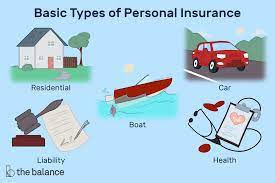To claim insurance, here are the common steps and procedures:
1. Contact your insurance provider: Notify your insurance provider as soon as possible after the incident occurs. They will guide you through the claim process and provide the necessary information.
2. Provide accurate information: Be prepared to provide detailed information about the incident, such as the date, time, and location it occurred, as well as any relevant documents or evidence.
3. Fill out claim forms: Your insurance provider will likely require you to fill out claim forms. Provide accurate and complete information to avoid any delays or complications.
4. Submit supporting documents: Along with the claim forms, you may need to submit supporting documents such as police reports, medical records, or repair estimates. Ensure you include all the necessary documents to support your claim.
5. Cooperate with the investigation: Your insurance provider may conduct an investigation to assess the validity of your claim. Cooperation and transparency during the investigation process are crucial.
6. Follow up: Stay in touch with your insurance provider to check the progress of your claim. Don’t hesitate to inquire about any additional information or documents they may need.
7. Resolve any outstanding issues: If there are any issues or disputes regarding your claim, communicate with your insurance provider to seek a resolution. They will provide guidance and assistance throughout the process.
Remember, each insurance provider may have specific procedures and requirements, so it’s essential to reach out to them directly for detailed instructions.
Certainly! Here’s a more detailed explanation of the common steps and procedures to claim insurance:
1. Contact your insurance provider: Notify your insurance provider as soon as possible after the incident occurs. Most insurance companies have dedicated hotlines or customer service departments to handle claims. Contact them and provide basic information about what happened, such as the type of claim (auto, property, health, etc.), the date and time of the incident, and a brief description of the damages or injuries.
2. Provide accurate information: When reporting the claim, be sure to provide accurate and detailed information about the incident. This includes the names and contact information of people involved, any witnesses, and other relevant details. Failing to provide accurate information may affect the processing of your claim or lead to a denial.
3. Fill out claim forms: Your insurance provider will require you to fill out claim forms. These forms gather specific details about the incident and allow you to provide a comprehensive account of what occurred. The forms may be available online, through email, or in person at your insurance company’s office. Make sure to complete them accurately and thoroughly.
4. Submit supporting documents: In addition to the claim forms, you’ll likely need to provide supporting documents to validate your claim. The documents required will vary depending on the type of insurance claim you are making. For example, if it’s an auto insurance claim, you might need to provide a police report, photos of the damage, repair estimates, and any medical records if you experienced injuries.
5. Cooperate with the investigation: Once your claim is submitted, your insurance provider may conduct an investigation to assess the validity and extent of the claim. They may hire an adjuster or investigator to gather more information, interview witnesses, or assess the damages. Cooperate fully and promptly respond to any requests for additional information or documentation during the investigation process.
6. Follow up: Stay in touch with your insurance provider to track the progress of your claim. You may want to ask for a claim reference number for easy reference in future communications. Regularly inquire about any outstanding documents or information they may need from you.
7. Resolve any outstanding issues: If there are disputes or issues that arise during the claim process, such as disagreements over coverage or claim value, communicate with your insurance provider to seek resolution. It may involve negotiations or further investigation. Many insurance companies also have a designated department to handle complaints or escalations if you are unsatisfied with the resolution offered initially.
Remember, each insurance company may have its own specific guidelines and procedures for claims, so it’s important to refer to their documentation or contact their customer service department directly for detailed instructions tailored to your policy and situation.


